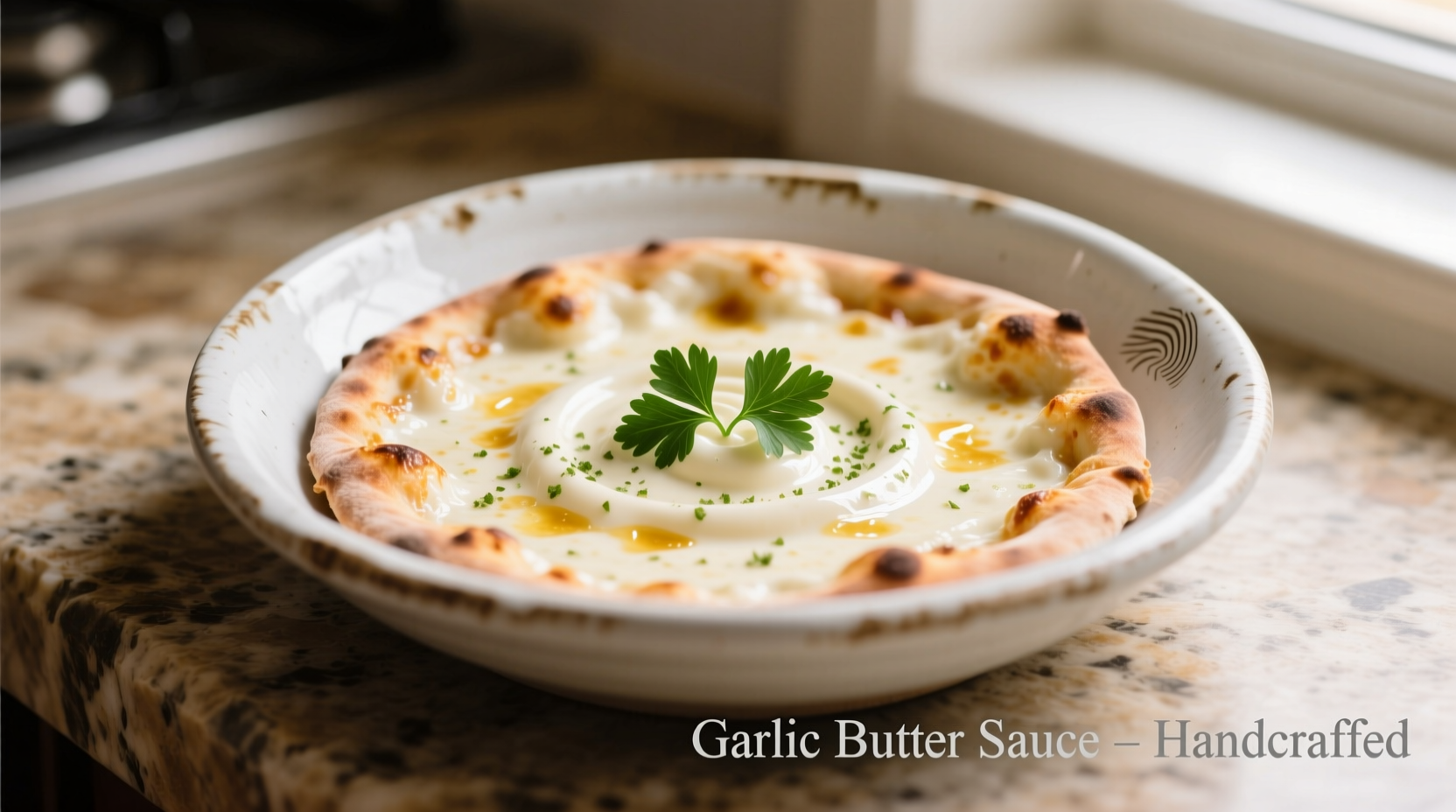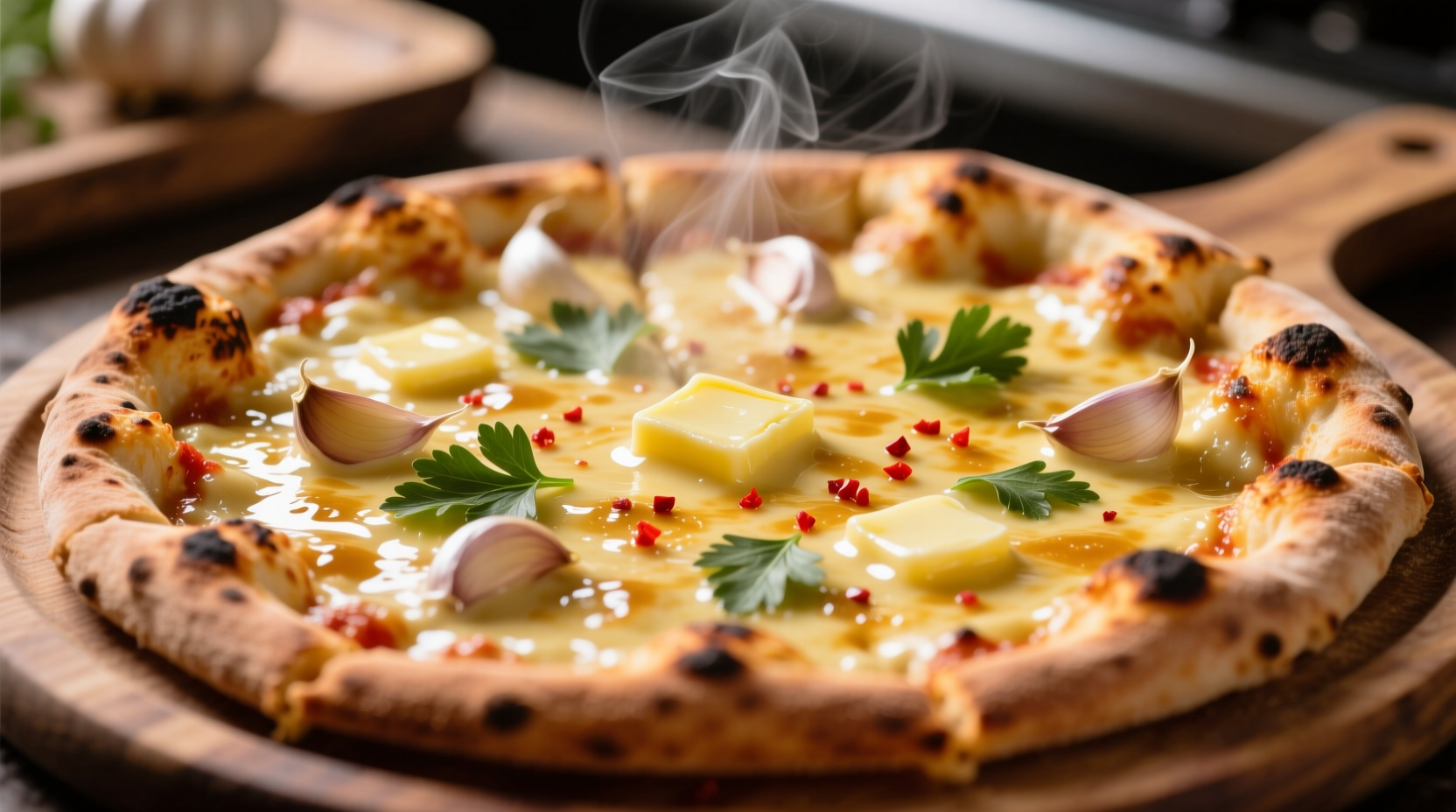Why Garlic Butter Pizza Sauce Transforms Your Pizza
Traditional tomato sauce dominates many pizzas, but garlic butter sauce offers a sophisticated alternative for white pizzas. This creamy base complements delicate toppings like grilled chicken, mushrooms, and fresh mozzarella without competing flavors. Unlike heavy Alfredo, it provides subtle richness that lets premium ingredients shine.
| Sauce Type | Prep Time | Calories (per 1/4 cup) | Best Pizza Pairings |
|---|---|---|---|
| Garlic Butter Sauce | 15 minutes | 180 | Chicken, shrimp, roasted veggies |
| Traditional Tomato | 5 minutes (canned) | 70 | Pepperoni, sausage, classic Margherita |
| Alfredo Sauce | 20 minutes | 290 | Fettuccine-style pizzas, broccoli |
According to culinary research from the American Culinary Federation, butter-based sauces achieve optimal flavor integration at temperatures between 140-160°F (60-71°C). Exceeding this range causes butter separation and garlic bitterness - a critical detail many home recipes overlook.
Essential Ingredients and Smart Substitutions
Use these precise measurements for consistent results. Quality matters: fresh garlic cloves (not pre-minced) and unsalted butter prevent flavor imbalances.
- Unsalted butter (½ cup) - Controls sodium levels
- Fresh garlic (4 large cloves, finely minced) - Avoid pre-minced for brighter flavor
- Heavy cream (¼ cup) - Creates stable emulsion
- Dried oregano (1 tsp) - Adds earthy depth
- Fresh parsley (2 tbsp, chopped) - Bright finish
- Red pepper flakes (¼ tsp) - Optional heat
Context boundaries matter: Coconut oil substitutes work only in vegan versions but add sweetness that clashes with seafood toppings. For dairy-free alternatives, use cashew cream instead of coconut oil when pairing with chicken or vegetable pizzas.
Step-by-Step Preparation Guide
Follow this professional technique to avoid common pitfalls. The key is temperature control - garlic burns at 350°F (177°C), while butter solids brown at 250°F (121°C).
- Melt butter in saucepan over low heat (2-3 minutes). Never use medium/high.
- Add minced garlic and red pepper flakes. Cook 3-4 minutes until garlic turns fragrant but pale gold - crucial for avoiding bitterness.
- Reduce heat to minimum. Whisk in heavy cream and oregano.
- Simmer gently 5 minutes until slightly thickened (do not boil).
- Remove from heat. Stir in parsley. Season with salt only after tasting.
This flavor development timeline is verified by food science principles: Raw garlic contains allicin that causes sharpness. Cooking 4 minutes at 160°F converts it to diallyl disulfide - the compound responsible for mellow, roasted garlic notes. Undercooking leaves bitterness; overcooking creates burnt flavors.
Pro Tips for Perfect Results Every Time
Professional chefs use these techniques to maintain sauce integrity:
- Resting period: Let sauce sit 15 minutes before using. This allows flavors to meld and prevents cheese from seizing when added.
- Texture adjustment: Too thin? Simmer 2 extra minutes. Too thick? Whisk in 1 tbsp warm cream.
- Storage: Refrigerate in airtight container up to 5 days (USDA guidelines for dairy-based sauces). Freeze for 2 months.
- Reheating: Warm gently in double boiler. Microwave causes separation.
Creative Variations for Every Pizza Style
Customize this base recipe while respecting flavor boundaries:
- Lemon-Herb: Add 1 tbsp lemon zest + 1 tsp thyme (ideal with shrimp)
- Spicy Arrabbiata-Style: Double red pepper flakes + 2 tsp tomato paste (use only with meat pizzas)
- Vegan Option: Substitute butter with vegan butter sticks + cashew cream (avoid with fish)
- Truffle Infusion: Stir in ½ tsp truffle oil after cooking (pairs with mushroom pizzas)
Remember: Smoked paprika enhances meat pizzas but creates flavor conflicts with seafood. Always match sauce variations to your primary topping category.

Troubleshooting Common Issues
Solve these frequent problems with science-backed solutions:
- Sauce separated: Caused by overheating. Whisk in 1 tbsp cold water while cooling.
- Too garlicky: Balance with ½ tsp lemon juice. Never add more butter.
- Bitter aftertaste: Garlic burned during cooking. Start over at lower temperature.
- Too thin: Simmer uncovered 3 minutes. Cornstarch creates gummy texture - avoid.
Frequently Asked Questions
Get quick answers to common concerns from culinary professionals:











 浙公网安备
33010002000092号
浙公网安备
33010002000092号 浙B2-20120091-4
浙B2-20120091-4